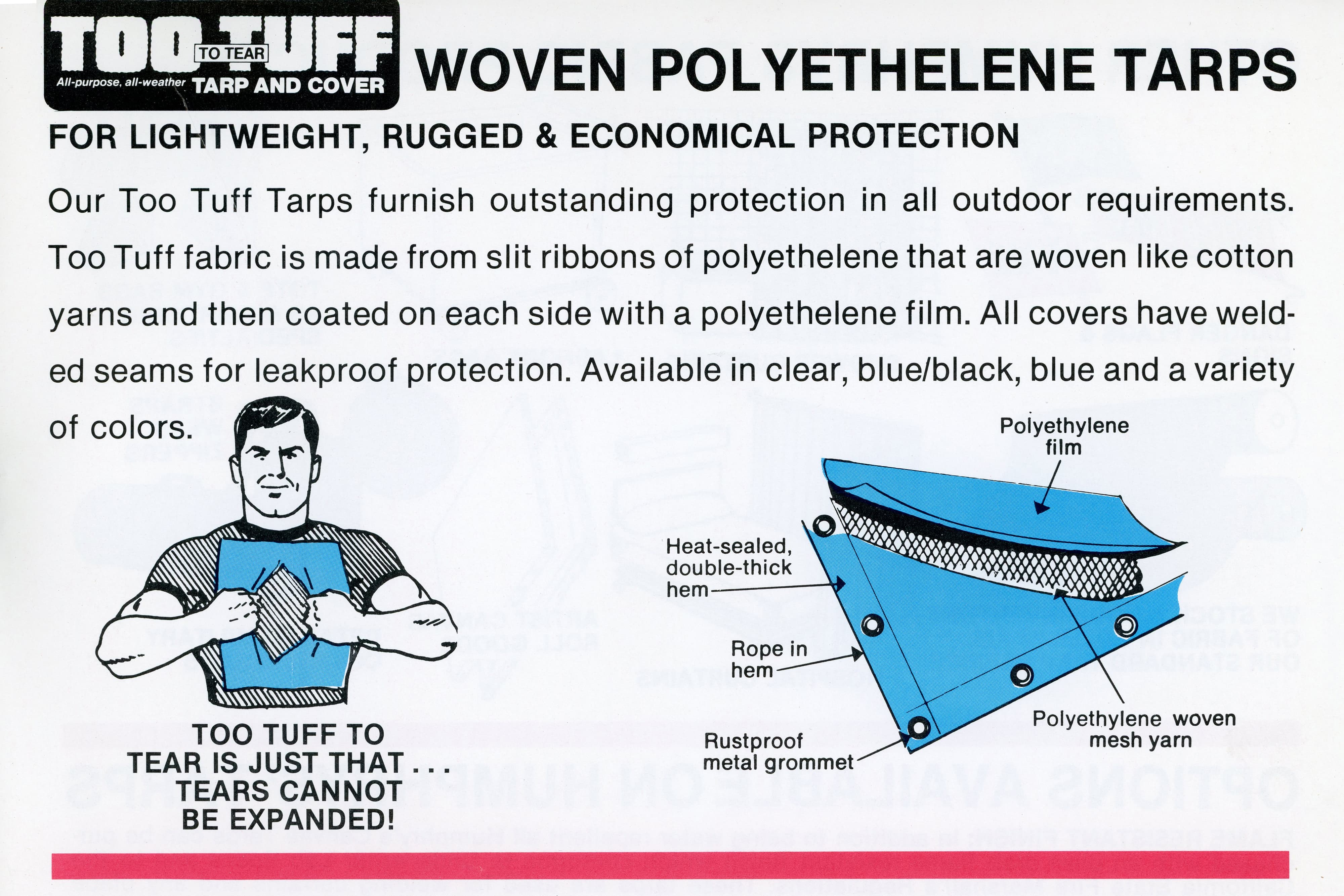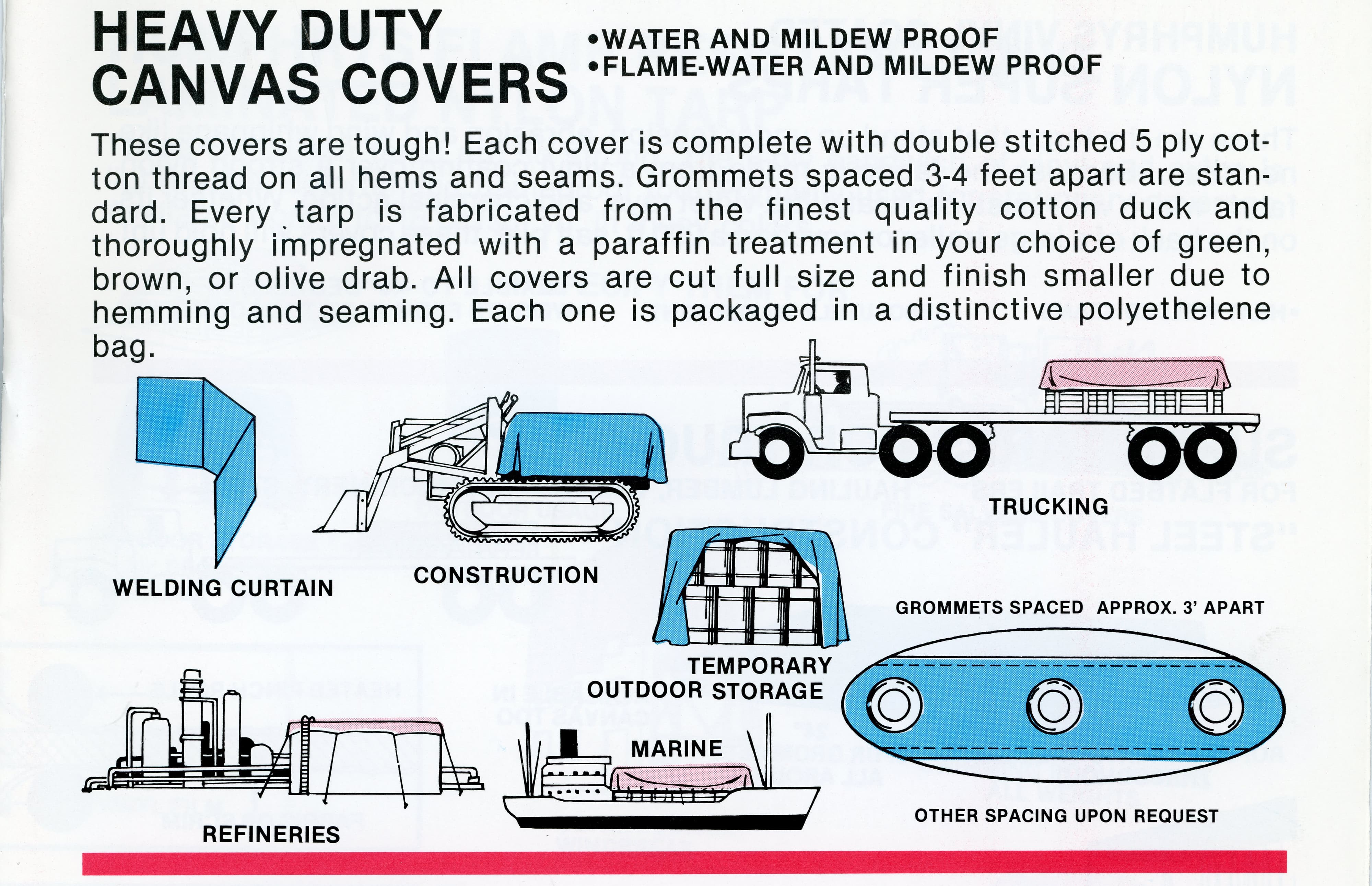
Product Guide
Waterproof vs Water-Resistant Tarps: Understanding the Difference

Tarps (short for tarpaulins) are essential for protecting equipment, materials, and outdoor spaces. However, not all tarps are created equal; some are fully waterproof, while others are water-resistant and allow for light airflow.
Understanding this difference helps homeowners, contractors, farmers, and truckers select the best heavy duty tarp for the job.
Waterproof Tarps
A waterproof tarp is completely impervious to water. Its sealed surface prevents moisture from passing through, even during heavy rain or submersion.
These heavy-duty tarps are often made from vinyl or polyethylene coatings that create a durable, watertight barrier. However, because they also block air circulation, they can trap condensation if moisture is sealed underneath.
✅ Ideal uses:
- Protecting valuable machinery or freight during transport
- Creating leak diverter tarps for industrial use
- Covering construction materials or vehicles
👉 See also: Heavy Duty Polyethylene Tarp
Water-Resistant Tarps
Water-resistant tarps repel water to a degree but are not entirely waterproof. These tarps usually have a specialized coating (typically a wax, oil, or silicone fabric treatment) to cause water to bead and roll off.
While effective for light to moderate rain, prolonged exposure will allow moisture through. The advantage? They are much more breathable, helping prevent mold and condensation.
✅ Best for:
- Temporary outdoor protection
- Farm equipment or hay covers
- Applications where airflow and breathability matter
👉 Related product: Canvak Waterproofing Treatment
Materials Matter: Poly, Vinyl, Canvas, and Mesh Tarps
The material defines whether a tarp is waterproof or water-resistant, along with its breathability and durability. Below are four main tarp materials:
Tarp Type | Water Repellency | Breathability | Best Uses |
Polyethylene Tarp | Waterproof | None | Construction site covers, roof patches |
Vinyl Tarp | Waterproof | None | Equipment covers, building enclosures |
Canvas Tarp | Water-Resistant | Moderate | Lumber or hay covers |
Mesh Tarp | Not Water-Resistant | High | Shade covers, truck bed nets |
Polyethylene Tarps (Poly Tarps)
Poly tarps are woven from plastic (often laminated) and are inherently 100% waterproof. They’re lightweight yet durable, offering an excellent strength-to-weight ratio.
They resist stretching and tearing but can become brittle with prolonged UV exposure. Though not as long-lasting as vinyl, they are an affordable, waterproof tarp option for quick coverage.
✅ Common uses:
- Covering construction materials or wood piles
- Temporary roof or leak protection
- Camping ground cloths
👉 Suggested link: Heavy Duty Polyethylene Tarp

Vinyl Tarps (PVC Tarps)
Vinyl tarps are the most durable heavy duty tarps available, fully waterproof and resistant to UV rays, abrasions, tearing, and chemicals.
Made from PVC-coated polyester, these vinyl tarps excel in harsh industrial conditions and are ideal for long-term, all-weather coverage.
✅ Best applications:
- Industrial machinery protection
- Trucking and freight (e.g., vinyl lumber tarps)
- Construction enclosures and flatbed covers
👉 Suggested link: Tarp Straps
Canvas Tarps
Canvas tarps are crafted from cotton fabric treated with waterproofing agents. While not fully waterproof, they are highly water-resistant and allow airflow, reducing condensation and mildew buildup.
Their breathability makes them ideal for protecting items sensitive to moisture, like wood, hay, or equipment.
✅ Top uses:
- Covering farm supplies or tools
- Storage protection for lumber or furniture
- Camping and outdoor shelters
👉 Related product: Tarp Patches

Mesh Tarps
Mesh tarps are not waterproof; they allow full airflow and moisture passage. They are uniquely designed for ventilation, shade, and wind reduction rather than water protection.
✅ Perfect for:
- Shading patios or greenhouses
- Truck beds or debris containment
- Agricultural ventilation covers
Choosing the Right Tarp
Choosing between waterproof and water-resistant tarps depends on your environment and use case.
- For complete water protection, choose vinyl tarps or poly tarps.
- For airflow and mildew resistance, opt for canvas tarps.
- When ventilation is key, mesh tarps are best.
Consider Leak Diverter Tarps for targeted waterproofing or Tarp Straps for secure tie-downs in windy conditions.
Shop Durable, Waterproof, and Heavy Duty Tarps from Humphrys Textiles
At Humphrys Textiles, we specialize in waterproof tarps, heavy duty tarps, and custom solutions for homes, farms, trucking, and construction sites.
Whether you need vinyl, canvas, or poly tarps, our team ensures your materials and equipment stay protected, rain or shine.Contact Humphrys today to explore our range of premium tarp materials and accessories.
Frequently Asked Questions
Are tarps waterproof?
Some tarps are fully waterproof (like vinyl and poly tarps), while others, such as canvas tarps, are only water-resistant. Always check the tarp material and coating before purchase.
What is the best tarp for heavy rain?
For sustained rainfall or pooling water, vinyl tarps are the best choice. They’re completely waterproof, durable, and resistant to UV and tearing.
Can you make a canvas tarp more waterproof?
Yes! Apply a Canvak Waterproofing Treatment or similar sealant regularly to improve water repellency and extend the tarp’s lifespan.
What’s the difference between waterproof and water-resistant tarps?
Waterproof tarps block all water penetration, while water-resistant tarps repel moisture but can eventually soak through during prolonged exposure.
Get a Free Quote
Ready to order or looking for more info? We’re here to help!Questions?
Call Us Today!
Visit Us
Pennsylvania:
5000 Paschall Ave
Philadelphia, PA 19134
Indiana:
11 Lousisa St.
Gosport, IN 47433


